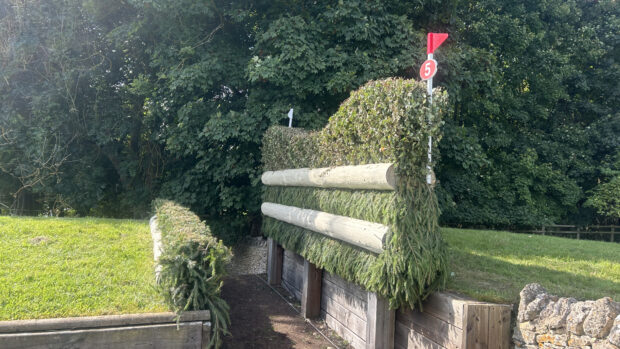Training your horse to jump up and down steps should come at a time when you feel your horse is accomplished enough in his education thus far to face such a question on a cross-country course. Here are some things you should consider before tackling steps.
1. Start small
First and foremost walk your horse up and then down small steps until they aren’t backing off or rushing. You are looking for them to maintain their walk rhythm despite the step or drop. Approach straight so you are on line and your horse can prepare. Be ready to react if your young or inexperienced horse takes a giant leap up or down the steps or drop — this is one of the reasons why you shouldn’t jump down too high a step to start with as you run the risk of your horse losing trust.
Continued below…
Looking to hone your skills with some schooling? How about these?
- Training with four-star event rider Caroline Moore in Shropshire
- Train with prolific eventer Lucy Wiegersma
- Train in Suffolk over a cross-country course
- Train in Essex over a cross-country course
2. Position
Don’t let your legs swing back. Your horse will stretch his neck forward and down so that he can use it to balance with going down a step. Even with long reins, the rider should maintain a light contact with the horse’s mouth. In no circumstances should the reins be too short. For the less experienced rider, it is always better to use a neck strap or hold the mane than to pull the horse in the mouth. Sit up if you are going down a step and think a little towards a jumping position if you are going up a step.
Continued below…
Want to put your schooling to the test? How about these competitions?
- Go unaffiliated eventing in Surrey
- Try a mini one-day event in Gloucestershire
- Eventing near Doncaster
- Go to a novice one-day event in Cambridgeshire
3. Canter
The key to jumping steps in an upwards direction is the quality of the canter. Collect your horse’s stride so he’s like a bouncing ball, with power, balance and energy — the canter needs to be strong so that he can bounce up the steps. Don’t confuse an energetic canter with a fast canter — really sit him back on his hocks. Keep a bouncy rhythm throughout the obstacle and try to avoid building up speed.




